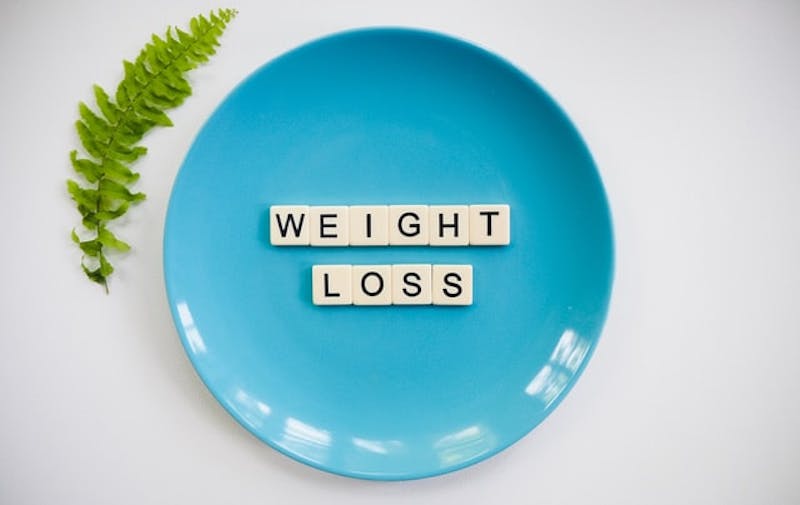
Image credit: Total Shape
Breaking down 5 of the most common and unhelpful weight loss myths. Plus what you should do instead.
There’s a lot of misinformation about there about health. We see it all the time, but especially when it comes to losing weight. There are weight loss myths of all kinds that get spread like wildfire.
The reason is that people know how hard it is to lose weight. They know it’s one of the toughest things to do and there are millions of Americans who are somewhere along their weight loss journey, just looking to make it easier.
So naturally, myths about how to do it best are everywhere. And it’s easy to get caught up in some of these myths, especially if you feel like you’ve been trying and failing over and over again.
So let’s get into some of those most common weight loss myths and what actually works instead based on the best research around right now.
Myth 1: You must have an intense exercise plan to lose weight
You’ll find any number of trainers and health gurus suggesting the most extreme measures when it comes to exercise.
But the truth is, you can lose weight through diet alone, but not through exercise alone. If you exercise and just keep up with the same eating habits, or even add food because now you’re hungrier after adding intense exercise, you’re actually undermining your weight loss efforts.
For most people, losing weight depends on eating fewer calories than you burn each day. But how you go about doing that will depend on your unique circumstances. And it isn’t as simple as it sounds. There are tough physical and psychological challenges that come along with changing lifestyle habits to lose weight. Weight loss is hard. No matter how anyone tries to boil it down to a simple equation of calories in vs calories out.
With all that being said, it’s still important to do exercise. There are countless other benefits from exercising regularly, from preventing cancers, improving heart health and blood pressure, to reducing stress, and improving sleep, energy, and mood. And the kind of exercise you do has an impact on your physique as you lose weight through dieting efforts. Your physique outcomes will be different if you spend most of your time exercising by lifting weights instead of running.
But the important thing to know about exercise and weight loss is that you don’t have to do a crazy intense workout program. The minimum recommended amount of exercise for optimal health benefits is 150 minutes of moderate exercise each week.
How to exercise for weight loss:
The important thing to know about exercise and weight loss is that you don’t have to do a crazy intense workout program. The minimum recommended amount of exercise for optimal health benefits is 150 minutes of moderate exercise each week.
What’s most important is to find the kind of exercise you like most and pair it with a healthy diet and ideal calorie intake for your weight loss goals. You also want to make sure your program is something sustainable—something you can actually stick with for long enough to see results.
You also want to train in progressions. Start with 30-minute sessions and build to 60-minute sessions if you have the time for that. It’s ideal to get a mix of training styles. Two days of cardio and three days with strength training, all for 30 minutes, is a great place to start.
Myth 2: Healthier foods are more expensive
We hear this one all the time, don’t we? We hear about how all the healthy food is just so out of reach for many Americans.
But the opposite is actually true.
Let’s think first about what we mean by “healthy”.
Healthy doesn’t mean organic. By healthy foods, we mean whole foods—fruits, vegetables, legumes, complex grains, and depending on your dietary restrictions, certain dairy (like yogurt and low-fat cheese) and lean meat as well.
So how expensive is it to eat healthy whole foods compared to lower quality foods and fast-food? Well it depends on how you calculate the price of food. According to USDA, we often hear that unhealthy foods are cheaper than healthy foods because the conversation centers on one way of calculating cost: price per calorie. It’s true that unhealthy foods are cheaper than healthy foods when talking about calorie density. But it’s a misleading way of talking about food cost alone.
Calories aren’t the only way to think about food. You can also think about the overall nutritional value. And how filling the food is. The same report from the USDA found that when calculating the cost of food by edible weight or by average amount eaten, the healthy foods are cheaper than unhealthy foods.
The one caveat is that you do end up spending more time preparing meals when you opt to buy the fresh whole and healthy foods over other options. And that time can seem like a huge downside.
But in the long run, for your health, that time spent is worth it. And cooking, once you get used to doing it and learn some tricks, can be not only fun, but relaxing.
Myth 3: Losing weight is impossible if you have snacks
Okay, there’s a lot of hate for snacking out there. But there’s nothing inherently evil about snacks. It’s all about moderation and smart choices in your diet plan.
How to snack smart
First off, make sure any snacks you add don’t put your over your daily calorie amount. Then you want to make sure your snacks are still nutritionally balanced. If all of your snacks are a serving of chips, sweets, and other high calorie foods, then your snacks aren’t serving you well.
The point of a snack is to have something to tide you over until you get to your next meal if you need it. Or for an energy boost in the afternoon when you start feeling sluggish.
So to make it impactful, you want to have a snack that is filling and full of essential vitamins and nutrients.
Good options would be a high-protein, low-fat yogurt. Greek yogurt or skyr are great choices. An apple with 1-2 tablespoons of peanut butter, depending on your calorie allotments. Both of these are tasty snacks that are filling enough to get you through to your next meal. Plus you get important nutritional requirements from them.
Myth 4: Losing weight is all about willpower
This is very likely the most harmful weight loss myth on this list. And one of the most damaging of all the myths around weight loss.
Now I won’t deny that losing weight takes a certain amount of discipline. But it’s about so much more than that.
There are ingrained patterns to overcome. There are eating habits that you’ve been living by for years and it will take time to undo and recover from that damage. A lot of times, these are habits or thoughts about food you don’t even realize you have. This is true of everyone.
How to think about your weight loss journey instead?
Will power isn’t something you can rely on forever. The key is to find a weight loss plan that works for you and that you’re happy to do.
And equally as important is to be patient with your progress and trust it will come. And in the meantime practice gratitude.
Be grateful for what your body does for you and be patient while waiting for the outcomes that you want.
Take it all one day at a time. Don’t judge yourself for what you did last year, last week, or even yesterday. Know what you need to do each day and give it your best effort to reach it. And if you fail one day, it doesn’t mean you’ll fail the next. With continued effort, changes will come about over time.
Work with us
As experts, we know that losing weight is a complex process. And while there are general rules everyone can follow to lose weight, what works best for you depends on your unique circumstances.
It’s our goal to help you create a plan with the best information and resources available to help you get to your ideal weight as soon as possible in a healthy and safe way.
Contact one of our offices today to get more information about what we offer and how you can work with one of our experts.
Sources:
- Carlson, Posted by Andrea, et al. “Healthy Foods Not Necessarily More Expensive Than Less Healthy Ones.” USDA, 21 Feb. 2017, www.usda.gov/media/blog/2012/05/16/healthy-foods-not-necessarily-more-expensive-less-healthy-ones.

